Disco Psychology - the science of drinking and dancing feature in this week's Naked Scientists. We find out what your dance moves say about your genes and why drinking alcohol or smoking cigarettes makes faces seem more attractive. Also, we discover what happens in the minds of people suffering from Post Traumatic Stress Disorder, PTSD. Plus, researchers make brain washing a reality, roll out a stream of x-rays from a reel of sticky tape, and reveal why the smell of rotten eggs may be good for your blood pressure! In Kitchen Science, we re-train Ben's brain see the world from a different angle!
In this episode
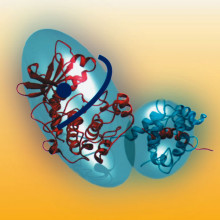
Brainwashing is here?
No longer the domain of science fiction, researchers at Medical College of Georgia in the US, have found a way to selectively wipe memories from the brain. So far they've only got this working in mice, which is a relief for us all.
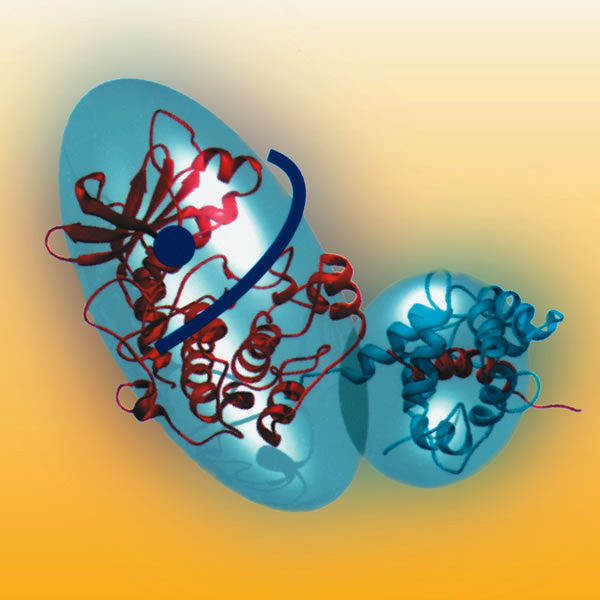 It all centres on a molecule called calmodulin-dependent protein kinase II, or CaMKII, a protein that plays an important role in many aspects of learning and memory.
It all centres on a molecule called calmodulin-dependent protein kinase II, or CaMKII, a protein that plays an important role in many aspects of learning and memory.
Writing in the journal Neuron, Dr Joe Tsien and his team describe their experiments to rapidly change the levels of CaMKII activity in the brains of genetically modified mice. The mice had been engineered so that CaMKII levels can be changed using a simple chemical. The researchers found that temporarily boosting levels of CaMKII affected whether the mice could remember newly-formed memories, or even fear memories from a month before. Then further experiments showed that is wasn't due to the fact that the mice couldn't recall the memories, rather that they had been specifically wiped, while other memories were unaffected.
If the name of Dr Tsien seems familiar, it may be because back in 1999, he and his team created Doogie, a mouse with enhanced learning and memory skills. Although it might sound like the work of evil scientists, the brain-wiping research could lead to ways to selectively wipe traumatic memories or unwanted phobias. However, Dr Tsien says that we shouldn't expect human brainwashing to turn up any time soon. He commented that "No one should expect to have a pill do the same in humans any time soon, we are barely at the foot of a very tall mountain."

02:56 - Making x-rays with sticky tape
Making x-rays with sticky tape
US scientists have made an extraordinary discovery - and x-rays - with a roll of sticky tape!
By placing the spool in a vacuum and unrolling the tape with a motor, they produced a burst of x-rays.
Writing in this week's Nature UCLA scientist Carlos Camara and his colleagues describe how they made the discovery whilst investigating the phenomenon of triboluminescence - the process by which materials give out light when they are squeezed or pulled.
"Triboluminescence is a well-known phenomenon," says Camara, "you can even see it in your mouth when you crunch certain types of candy, but no one had thought that the process could produce even more powerful forms of light light x-rays!"
Triboluminescence occurs in the sticky tape when the glue is pulled away from the underlying tape layer.
The molecules stretch out, separating electrical charges in the adhesive.
As they are pulled further apart the voltage between the charges increases to the point where it overcomes the natural resistance of the material and discharges, producing a miniature lightning bolt. This is what produces the visible light.
But, the team discovered, things become a lot more interesting if the tape is unwound in a vacuum. Now electrons that flow when the material discharges travel much faster, because there are no air molecules to slow them down.
As a result, when they slam back into the tape surface, they decelerate so quickly that they turn all of their energy into a short, vigorous burst of x-rays strong enough, the team found, to x-ray their fingers!
Although no one is advocating turning tape reels into x-ray machines, this breakthrough does represent the most compact and lightweight way yet discovered to produce x-ray light.
"This could have all kinds of applications for portable x-ray production in cameras and other imaging devices," suggests Camara.

Rotten eggs regulate blood pressure
As the childhood saying goes, "he who smelt it, dealt it", and we're all familiar with that unpleasant whiff of rotten eggs, the 'pleasant' perfume released by breaking wind. This is the gas hydrogen sulphide at work.
 But now a team of researchers has shown that this whiffy gas plays an important role in controlling blood pressure, and is produced by cells that line the blood vessels. The scientists found that hydrogen sulphide can relax blood vessels, dropping blood pressure.
But now a team of researchers has shown that this whiffy gas plays an important role in controlling blood pressure, and is produced by cells that line the blood vessels. The scientists found that hydrogen sulphide can relax blood vessels, dropping blood pressure.
To find the link, the researchers studied mice missing a gene for an enzyme called CSE, which has long been suspected to make hydrogen sulphide in the body. They measured the levels of the gas in the tissues of these mice, and compared them with normal mice, unsurprisingly finding that the mice lacking CSE had very little hydrogen sulphide.
Next, they used tiny blood-pressure cuffs on the mouse's tails to measure their blood pressure, and found it was around 20% higher in the mice lacking CSE - showing they had serious hypertension. And they also found that blood vessels taken from the CSE-deficient mice hardly relaxed at all when they added a drug that normally relaxes them.
Although the work has only been done in mice so far, it's highly likely that the same systems are at work in humans too. If this sounds familiar, it's because we've known for some time about another gas produced by blood vessel cells, nitric oxide, that has a similar effect. Drugs that affect nitric oxide production are already in use - though one of them, Viagra, is rather more famous for its side effects.
Now this new hydrogen sulphide pathway has been discovered, it opens the door for the development of new types of treatment for high blood pressure.
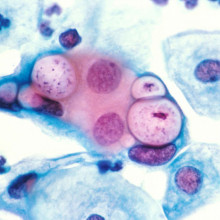
The ST-E-Card
Doctors have developed a new technique with which to tackle the problem of sexually transmitted infections (STIs).
At the moment when a patient is diagnosed with an STI there follows a laborious contact-tracing process intended to track down, warn, test and treat other partners who might be at risk. This is a very time consuming and costly exercise but is absolutely critical from a public health perspective. Some patients also find it embarrassing.
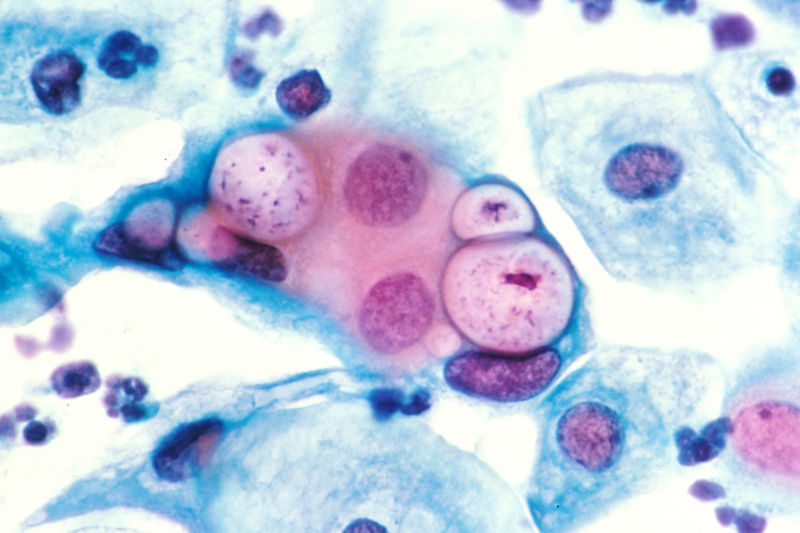 Now, writing in the journal PLoS Medicine, Deb Levine and her colleagues from the Internet Sexuality Information Services, present the electronic answer - a system of anonymous e-postcards that alert recipients to what they might have picked up at a party recently.
Now, writing in the journal PLoS Medicine, Deb Levine and her colleagues from the Internet Sexuality Information Services, present the electronic answer - a system of anonymous e-postcards that alert recipients to what they might have picked up at a party recently.
Their web-based initiative called inSPOT, which stands for Internet Notification Service for Partners or Tricks, is a website with a difference. Users choose from a range of online "greetings" cards which they then customise by selecting the infection with which they have been diagnosed. They can also add a short message if desired. The cards are then sent anonymously via email to recipients identified by the patient. When the recipient receives the e-card it pops-up links to information about the disease they might have caught or be carrying together with a list of the nearest places to seek treatment or advice.
Since the system was first launched in San Francisco in 2004 nearly 50,000 e-cards have been sent. It has since been scaled up to many other cities and translated into other languages. About 50% of recipients of the e-cards, it seems, also choose to avail themselves of the information provided when the cards arrive in their inboxes.
Although the system relies on patients knowing the electronic contact details of their contacts in order to warn them, the team point out that large numbers of cases of STIs are now occurring amongst people who use the Internet to meet new partners and so, by definition, they usually already have this information. And with one person in ten infected with chlamydia in certain age groups and rates increasing by 100% per year in some areas, this initiative could help to stem the epidemic. But let's just hope that no one starts using it to spread computer viruses!

Warm coffee warms the heart
Here at the Naked Scientists we're all pretty warm-hearted people, but now researchers at Yale University have shown that it might be down to our choice of drinks rather than our nice personalities.
 |
| This photograph shows a glass of latte macchiato, which is a hot beverage made from steamed milk and espresso. © Image by Aleph, http://commons.wikimedia.org |
Writing in the latest issue of the journal Science, the researchers have found that people judged others to be more generous and caring if they had just held a warm cup of coffee, but not so nice if they had held an iced coffee. Following on from this, they also found that people are more likely to give something to others if they had just held something warm, but more likely to take if they had held something cold.
To test their ideas, the researchers asked volunteers to briefly hold either a warm cup of coffee or iced coffee as they wrote down information. The subjects were then given a packet of information about a person and then asked to assess their personality. The volunteers felt that the person was significantly "warmer", in personal terms, if they had just been holding the hot coffee, compared with those who held the iced coffee. For their next experiments, volunteers either held hot or cold packs, and were told they could either have gift certificate for friend or a gift themselves. The researchers found that those who held the hot pack were more likely to ask for the gift certificate, while those who held the frozen pack tended to keep the gift.
So physical warmth not only makes us see other people as warmer, but leads us to be more generous and trusting ourselves. This ties in with recent brain imaging studies showing that heat or cold can trigger activity in part of the brain called the insular cortex - the same area is damaged in people who have borderline personality disorder, meaning they can't co-operate with people or figure out who to trust.
The same researchers had previously shown that the physical distance between individuals also influences their judgements about another person. Added to that, this new work suggests that using words to describe people like warm, cold, or distant are more than simple metaphors, but have a more deep-seated meaning.Experiencing Physical Warmth Promotes Interpersonal Warmth Lawrence E. Williams and John A. Bargh Science 24th October 2008: 606-607.
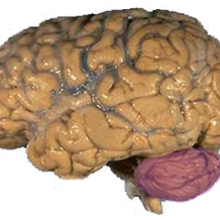
31:26 - Post Traumatic Stress Disorder
Post Traumatic Stress Disorder
with Peter Naish, Open University
Ben - Can you trust your memory? It seems that a large proportion of people, when asked, can remember seeing things that they have never had chance to see, such as footage of the London bus bombings that has actually never been shown. While the unreliability of memory is something we should be concerned about in a legal setting, more damaging to our health are the memories that we just cannot forget, such as the debilitating flashbacks occurred by sufferers of Post Traumatic Stress Disorder, or PTSD.
'Memories in Distress' was the title of the talk given at the BA Festival of Science by Peter Naish, who normally resides at the Open University. He explained to Meera how, in PTSD, the brain can be fooled into accepting a memory as if it were happening in front of your eyes. Definitely both a distressing memory and your memory in distress...
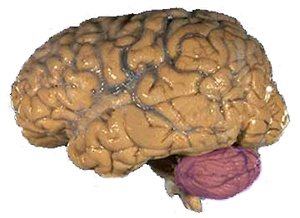 Peter - The event is covering a whole spectrum of memory problems. These problems seem to be associated with processes that make people very unhappy sometimes, this can be the fact that when people tend to be a bit depressed anyway, they seem only able to remember sad events in their life and all the good times fade into the background. An even worse thing to put up with is Post Traumatic Stress Disorder, when people get terrible flashbacks of some shocking event in which they took part, like a road traffic accident. I'll be telling the story of someone who was trapped on one of the underground trains when the terrorist bombs went off, and afterwards for a long time she got vivid flashbacks, so vivid she felt she was still there on the train. She believed that the flashbacks, which only lasted a short while, were real life, and that she was still in the train and was going to die. Really a horrible experience that went on for months.
Peter - The event is covering a whole spectrum of memory problems. These problems seem to be associated with processes that make people very unhappy sometimes, this can be the fact that when people tend to be a bit depressed anyway, they seem only able to remember sad events in their life and all the good times fade into the background. An even worse thing to put up with is Post Traumatic Stress Disorder, when people get terrible flashbacks of some shocking event in which they took part, like a road traffic accident. I'll be telling the story of someone who was trapped on one of the underground trains when the terrorist bombs went off, and afterwards for a long time she got vivid flashbacks, so vivid she felt she was still there on the train. She believed that the flashbacks, which only lasted a short while, were real life, and that she was still in the train and was going to die. Really a horrible experience that went on for months.
Meera - What happens in someone like that's brain in order for them to actually believe that the 'dreams' they're having are reality?
Peter - We have to go back and consider how memory works. The brain really is an information processing system. So all the information that our senses acquire about our world, they have to be analysed so that we can make sense of it. The brain has specialised areas, some that deal with visual processing, some for sound, and even within those there are sub-divisions to do different tasks. Finally, you as it were put it all together and you have your impression of what is going on around you. As the information goes through the brain, it leaves a trace, and that trace is a memory. Now because it's all distributed, you have to have a process that can assemble things. This seems to revolve around a part of the brain called the hippocampus. It's the part of the brain that gets bigger in London taxi drivers when they learn the entire A to Z, so wherever you ask them to take you, they know it - just like that! It's a prodigious memory feat, and their brain actually gets bigger as a result. So the hippocampus gathers together all the relevant little pieces of information for the particular memory you're trying to resurrect.
But there seems to be another system which one imagines must be the more primitive one. When memory got underway for animals, it must have been a thing for safety. If you have a scary experience, and your brain is designed to recognise that it's dangerous, so you run, the next good thing to do is to remember that - so if some of those scary things start to show up, it triggers exactly the same response. In other words, you feel frightened even if you haven't seen anything dangerous yet. That is looked after by another part of the brain, not the hippocampus, a region called the amygdala. It would seem that when people get Post Traumatic Stress Disorder, PTSD, it look as if the Amygdala has taken over. So it's almost like having a library, all the books are our little details and we assemble the little books to get the complete story - that can be done with a good, well ordered librarian, the hippocampus. Or there's this maniac who just keeps dashing in and getting the books and shoving them under your nose, you've got to read them. That is PTSD.
Meera - So you're saying that when someone is taken back to distressing times, the amygdale is pushing out the happier memories from the hippocampus and placing the worse memories in, and that's what they're experiencing?
Peter - I think the amygdale is principally involved, the story I was just telling, is particularly for post traumatic stress disorder, which is far worse than simply being depressed, although that's bad enough. The amygdale seems to be involved when the memory simply will not go away, the slightest thing can trigger it. The lady I mentioned who suffered in the tube bombings, she dreads firework night. She hears an explosion and there's nothing she can do about it, the memory's there in front of her eyes as if she's back on that train. Whereas other things will jog your memory, someone says something or you perhaps have a smell that you remember and you think 'Oh, that takes me all the way back to... whatever', but you don't then have to keep thinking about it. It takes you back, it doesn't make you think you're there. But the amygdale seems very much to collect all of the raw sensory information coming in, before it's well processed. It makes something that looks just like it would if information really were coming in. The poor brain, a bit further downstream, doesn't know the difference. It gets information that seems to be coming from the senses, and it treats it as real.
Meera - So now that you know what's happening in the brain, what is the research being done in order to help people that are having, say, recurring nightmares or Post Traumatic Stress?
Peter - We are getting better, we have someone speaking here today, Professor Anka Aylas, together with her colleagues, her husband professor Clarke. They have developed a very nice programme for PTSD, which gently has to take people back in their mind to these, they call them 'Hot Spots', the key things that just keep coming back into their minds. And little by little, the 'sting' is taken out of it, as it were, and it lets the information be processed really in the proper way. It looks as if it's letting the hippocampus do its normal job, and that takes over and turns it into a more well behaved memory which will sit on the library shelf until anyone wants it. Of course, these poor people aren't going to want it in a hurry!
Ben - A promising, and surprisingly simple way to tackle Post Traumatic Stress disorder, and let people who have been through disaster return to a normal life. Peter Naish there, talking to Meera Senthilingam at the BA festival of science in Liverpool.

38:52 - Beer and Beauty
Beer and Beauty
with Marcus Munafo, University of Bristol
Kat - Now, the beer goggles, or stella-vision, is a well known phenomenon where a few alcoholic drinks makes other people seem much more attractive, sometimes even leading people to do things they regret. Psychologists at Bristol University have been looking into this effect, and it seems that there's more to it than it seems at first. We've got Marcus Munafo with us to explain a bit more... So Marcus, do beer goggles really exist and what causes them?
 Marcus - Well, they do seem to exist and that's probably not a great surprise to most people. As you say many of us have been in that situation where we've has a drink and found ourselves finding other people attractive where, perhaps before the drink we didn't. This started out really as a bit of fun as a student project. We were surprised that no one had tried to do this in the more controlled environment of a lab. Although it was a popularly understood or believed phenomenon no one had tried to look at this under controlled conditions. We randomly gave people either a drink containing alcohol or a placebo drink that smelled the same but didn't contain alcohol and we found that after a relatively small amount (equivalent to a pint and a half of beer or a large glass of wine) people rated other faces as about 10% more attractive. These were the faces of male and female participants who were presented on a computer screen. People had to rate them on a seven point scale for how attractive they found them.
Marcus - Well, they do seem to exist and that's probably not a great surprise to most people. As you say many of us have been in that situation where we've has a drink and found ourselves finding other people attractive where, perhaps before the drink we didn't. This started out really as a bit of fun as a student project. We were surprised that no one had tried to do this in the more controlled environment of a lab. Although it was a popularly understood or believed phenomenon no one had tried to look at this under controlled conditions. We randomly gave people either a drink containing alcohol or a placebo drink that smelled the same but didn't contain alcohol and we found that after a relatively small amount (equivalent to a pint and a half of beer or a large glass of wine) people rated other faces as about 10% more attractive. These were the faces of male and female participants who were presented on a computer screen. People had to rate them on a seven point scale for how attractive they found them.
Kat - And it's definitely the alcohol, is there a placebo effect here at all?
Marcus - Well, we didn't compare the placebo drink with nothing so there may have been a placebo effect which we didn't detect. Certainly, when we compared the placebo condition to the alcohol condition there wasn't this ten per cent difference. What was interesting was that this didn't seem to be restricted to opposite sex faces. So we purposefully recruited people who described themselves as heterosexual and even same sex faces were rated as equally more attractive as opposite sex faces.
Kat - So you just think everything look great!
Marcus - Well, pretty much. At least that's what the data looked like. What we want to follow this up with is to see to what extent the effect is specific to faces. People weren't, because we gave a small amount of alcohol, people weren't saying that they were happier. They weren't reporting any changes in their mood but they were rating faces as more attractive. There is a question of whether or not we would rate anything as more attractive.
Kat - Like art or something like that?
Marcus - Like art or landscapes. Things that you could reasonably describe as attractive might show the same effect. So we're running a follow-up study to look at this now. The interesting thing is this seems to be potentially - we need more studies to find out what's going on - it seems to be a general effect of alcohol on potentially processing faces but potentially processing anything as attractive. But there was one study which mentioned this in a more naturalistic environment where they went into a bar. They didn't control for what people had been drinking. They didn't randomly give people one drink or another so it was a less controlled experiment but it was conducted in a real world environment, if you like. They just asked people how much they'd been drinking and they got them to do something similar to what we did. In that situation then the effect was specific to opposite sex faces. What we think might be happening is that there's one effect of alcohol which is that it modifies how we process faces, attractiveness and so on. When that occurs in a particular social setting, where there are social cues to do with mate-seeking behaviour and social interaction and so on then that effect becomes targeted among same-sex faces.
Kat - If you're at a typical party it's not just booze that's there. There may be cigarettes if you're at a very exciting party and there may be things like drugs. Do these have an effect?
Marcus - This is where it becomes a little bit more interesting. Finding the effect for alcohol is straightforward enough. Alcohol is a drug in much of the western world and it is largely used in social situations. The exact nature of those social situations differs across different countries. But you're right there are plenty of other drugs that we use including illegal ones very commonly. Caffeine's one, nicotine's another one and there are not legal in this country at least which are also used fairly extensively. We looked at nicotine. We did basically exactly the same study which was not an easy study to do because it's illegal to smoke indoors now.
Kat - Bad luck!
Marcus - There is an exemption in the legislation for research but for this study we had to do it in the back of a pub which is a more realistic environment so we were sat there with a laptop. It's quite clever - cigarettes either do or don't contain nicotine. You smoke a cigarette and you don't know whether it contains nicotine. Essentially you have a placebo condition and a nicotine condition. What we found was exactly the same effect. The nicotine - what we found that was after one cigarette there was a marked increase in the rate of attractiveness of faces when the cigarette contained nicotine compared to when it didn't.
Kat - That's really intriguing. Do you know why this might be? Do you think certain pathways in the brain are similarly being activated?
Marcus - We know that drugs of use have the capacity to stimulate the reward system and the dopamine pathway in a part of the brain called the nuclear accumbens and that might be part of the reason. Nicotine's an interesting case in point though because we know quite a lot about hwy nicotine's addictive and one of the reason's it's addictive - nicotine's not the drug that gives you a powerful psychoactive effect in the same way that alcohol does in cocaine or heroin. Once you've had your first 2 or 3 cigarettes you kind of tolerate the strong response you get to those. After that the effect is relatively mild. What nicotine seems to do, and there are animal studies that show this in different experiments, is that they make everything that happens around you slightly more reinforcing. In technological language it non-contingently potentiates the reward value of other things that are happening at the same time.
Kat - And another thing you associate alcohol with are not necessarily being attracted to someone but beating them up. If you're being more attracted to people why does alcohol fuel violence?
Marcus - There are lots of social cues that are present in faces. It's not necessarily the case that alcohol is going to be having uniform effect across all of those different facial cues. One of the things that we get from faces are judgements of attractiveness - in other words we think they might be a potential mate and we might direct our attention towards one sort of person over another, for example. We also get information over what kind of emotion that person is expressing: whether they are looking at us, whether they are a potential threat. There are lots of different cognitive mechanisms and information which is expressed in faces which we can interpret. Alcohol may modify the interpretation of those different pieces of information in slightly different ways. We have a programme of study that's looking at this: looking at for example, judgements of eye gaze and whether or not people are perceived to be looking at us after you've had a drink compared to when you haven't had a drink.
Kat - Kind of, ' Are you looking at me?'
Marcus - Exactly that and people certainly do start to see the world in a different way after they've taken drugs. This is true for nicotine and alcohol which are the main ones we investigate and there are quite complex and quite subtle effects that we can reproduce in the lab but which in the real world probably interact with all kinds of social cues and the more general dis-inhibiting effect of alcohol as well.

47:04 - A Better Balanced Bike?
A Better Balanced Bike?
We put this to Jos Darling, Mechanical Engineering, University of Bath:
That's a tricky one, really. The answer is pretty much however you want to do it. If you're looking at just the rolling resistance the way tires work is that the more weight on the tire the more rolling resistance. What I mean by rolling resistance is how difficult it is to push the wheel forward against the road. As long as you keep the pressure in the tires at a nice high value you'll find they roll very easily. Whether you put the weight on the front or on the back, given it's got to be shared by one or the other, it's not going to make that much odds. That's the simple answer. But of course, it's never quite that simple. If you look at the finer detail you've got more complicated things like aerodynamics. If you've got a basket on the front that's probably not going to help a whole lot. You might do better to put the luggage on the back where it's hidden behind the rider. The other thing that you might find is that if you've got all the weight over the front then the front gets a bit wobbly. So rather than cycling in a nice, straight line, you're going to be wiggling a bit and trying to balance the bike more carefully. In a way that's going to waste some of your energy like scrubbing off the speed if you're trying to go round the bend quickly.
In a sense you'd better try and share the weight between the front and the back. The answer is it's not going to make much difference at the end of the day. Unless Bunny is whizzing down hills at enormous hills at speed in Portland I suspect the aerodynamics aren't going to be a big issue. You needn't worry yourself about where you put the weight.
- Previous Brain Washing and X-Ray Tape
- Next Copper: Chemistry in its element
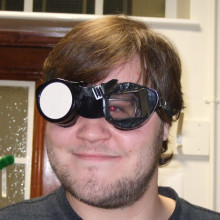










Comments
Add a comment